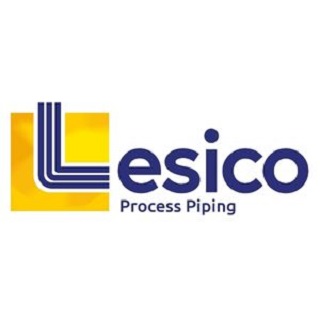Maximizing Efficiency in Process Piping and Pipeline Installation Projects
Process piping projects and pipeline installation projects play a critical role in industries such as oil and gas, chemical processing, pharmaceuticals, and manufacturing. These complex systems transport fluids, gases, and chemicals, ensuring efficient production processes, safety, and compliance with regulations. The success of on-site process piping projects and large-scale pipeline installations depends on meticulous planning, innovative design, and expert execution.
In this blog, we’ll explore the key components of successful process piping and pipeline installation projects, the benefits of on-site process piping, and best practices to ensure efficient, cost-effective execution.
Understanding Process Piping Projects
Process piping is essential for industries that require the controlled movement of fluids, gases, and chemicals within their operations. Unlike conventional plumbing, process piping systems are designed to meet industry-specific standards and regulations, considering factors such as pressure, temperature, and the corrosive nature of materials being transported. These systems are often customized to the needs of a specific process or facility.
Key Components of Process Piping Systems
- Pipes and Tubes: The core of any process piping system is the network of pipes and tubes. These are typically made of materials like stainless steel, carbon steel, or specialized alloys that can withstand the operating conditions of the system.
- Valves: Valves control the flow of fluids and gases within the piping system. Various types of valves, including gate, ball, and check valves, are used depending on the specific needs of the process.
- Fittings and Flanges: Fittings and flanges connect pipes and other components in the system. These connections need to be secure and resistant to leaks, especially in high-pressure or high-temperature environments.
- Supports and Hangers: Proper support and hanging mechanisms ensure that pipes remain in place, preventing stress or damage due to thermal expansion, vibrations, or the weight of the fluids being transported.
- Control Systems: Many process piping systems incorporate advanced control mechanisms, including sensors, automation, and monitoring technologies, to maintain precise control over the flow and pressure of the fluids or gases.
Phases of Process Piping Projects
Process piping projects typically follow these phases:
- Design and Engineering: The first step is creating detailed designs and specifications based on the requirements of the industrial process. Engineers must consider safety standards, material compatibility, and efficiency to create an optimized design.
- Material Selection: Choosing the right materials is crucial for ensuring the longevity and efficiency of the system. Factors like corrosion resistance, pressure tolerance, and temperature range are all considered during this phase.
- Fabrication: Once the design is finalized, the pipes and components are fabricated. Prefabrication often takes place off-site to minimize disruption at the installation site and ensure greater precision.
- Installation: During the installation phase, pipes, fittings, and other components are assembled on-site according to the project specifications. This stage requires expert handling to ensure the integrity of the system and compliance with safety standards.
- Testing and Commissioning: Before the system becomes operational, rigorous testing is conducted to ensure it meets performance standards and regulatory requirements. This includes pressure testing, leak detection, and system calibration.
On-Site Process Piping Projects
On-site process piping projects involve the fabrication, assembly, and installation of piping systems directly at the facility where they will be used. While prefabrication in controlled environments is common, some piping systems are too complex or large to be fully prefabricated off-site. In such cases, on-site process piping projects are essential to ensure that the system meets specific facility requirements.
Benefits of On-Site Process Piping Projects
- Customization: On-site projects allow for greater flexibility in adapting the piping system to the unique layout and needs of the facility. This ensures the system fits precisely within the existing infrastructure.
- Reduced Transportation Costs: Since a significant portion of the work is done on-site, there are fewer transportation requirements for large, prefabricated components. This reduces logistics costs and the risk of damage during transit.
- Real-Time Adjustments: When systems are assembled on-site, engineers and technicians can make real-time adjustments to accommodate unforeseen challenges or changes in the facility’s layout.
- Integration with Existing Systems: On-site projects allow for seamless integration with existing piping networks, minimizing downtime and operational disruption.
- Compliance with Local Codes: Local regulations and safety codes can vary significantly depending on the region and industry. On-site process piping projects ensure that installations adhere to these specific requirements.
Challenges of On-Site Process Piping Projects
- Weather Conditions: On-site projects are subject to weather conditions, which can delay construction and affect project timelines. Proper planning and contingencies are essential to mitigate these risks.
- Limited Space: Many industrial facilities have limited space for new piping systems. On-site teams must work within confined environments, which can increase the complexity of the project.
- Coordination with Other Trades: On-site projects often require coordination with other trades, such as electrical and HVAC, which can lead to scheduling challenges. Effective project management is key to ensuring smooth collaboration.
Pipeline Installation Projects
Pipeline installation projects typically involve the construction of pipelines to transport liquids or gases over long distances. These projects are critical for industries such as oil and gas, water distribution, and chemical processing. The scale and complexity of pipeline installation projects vary, ranging from small, localized pipelines to large, cross-country networks.
Key Phases of Pipeline Installation Projects
- Survey and Planning: Before installation begins, thorough surveys are conducted to assess the terrain, environmental impact, and any obstacles that may affect the pipeline route. Detailed planning ensures that the pipeline is installed efficiently and safely.
- Trenching and Excavation: Once the route is finalized, trenches are excavated to lay the pipeline. The depth of the trench depends on factors such as the type of fluid being transported, environmental regulations, and safety concerns.
- Pipe Laying and Welding: After the trench is prepared, the pipes are laid out and welded together. Special care is taken to ensure the welds are secure and meet safety standards, as any weak points in the weld can lead to leaks or failures.
- Backfilling and Restoration: Once the pipeline is installed and tested, the trench is backfilled with soil, and the surrounding environment is restored to its original condition.
- Inspection and Testing: Like process piping systems, pipelines undergo rigorous testing to ensure they are leak-proof, safe, and compliant with regulations. This includes hydrostatic testing, where the pipeline is filled with water and pressurized to check for leaks.
Benefits of Pipeline Installation Projects
- Efficient Transport: Pipelines offer an efficient means of transporting large volumes of liquids or gases over long distances, reducing the need for transportation by trucks or ships.
- Cost-Effective: While the initial investment in pipeline installation can be significant, pipelines provide long-term cost savings due to their low operating and maintenance costs.
- Environmental Impact: Modern pipeline installation methods prioritize minimizing environmental impact, ensuring that projects comply with regulations to protect ecosystems and reduce carbon footprints.
- Safety and Reliability: Pipelines are considered one of the safest means of transporting hazardous materials, as they reduce the risk of accidents associated with other transport methods.
Best Practices for Successful Piping and Pipeline Projects
To ensure the success of process piping projects, on-site process piping installations, and pipeline installation projects, several best practices should be followed:
- Early Involvement of Experts: Involving engineers, project managers, and contractors early in the project allows for better planning, material selection, and design optimization. This helps prevent delays and cost overruns during later stages of the project.
- Accurate Budgeting and Scheduling: Establishing a realistic budget and schedule is essential for keeping the project on track. This includes accounting for potential risks, such as weather delays or material shortages.
- Regular Inspections and Quality Control: Throughout the fabrication and installation process, regular inspections should be conducted to ensure that all components meet industry standards. Quality control measures help prevent defects and ensure the safety of the system.
- Communication and Collaboration: Effective communication between all stakeholders is key to ensuring a smooth project. Regular meetings and progress updates help keep everyone aligned and address any issues as they arise.
- Sustainability Considerations: With increasing emphasis on environmental sustainability, many piping and pipeline projects are incorporating eco-friendly materials and methods. This includes using energy-efficient technologies, reducing waste, and minimizing environmental disruption.
Conclusion
Process piping projects, on-site process piping installations, and pipeline installation projects are critical components of many industrial operations. The success of these projects hinges on detailed planning, expert execution, and adherence to safety and regulatory standards. By following best practices, investing in skilled professionals, and prioritizing efficiency, businesses can ensure that their piping systems are reliable, cost-effective, and built to last.
Whether you are embarking on a large-scale pipeline installation or a customized on-site process piping project, careful consideration of materials, design, and installation methods is key to achieving long-term success and maximizing the efficiency of your industrial processes.













Post Comment